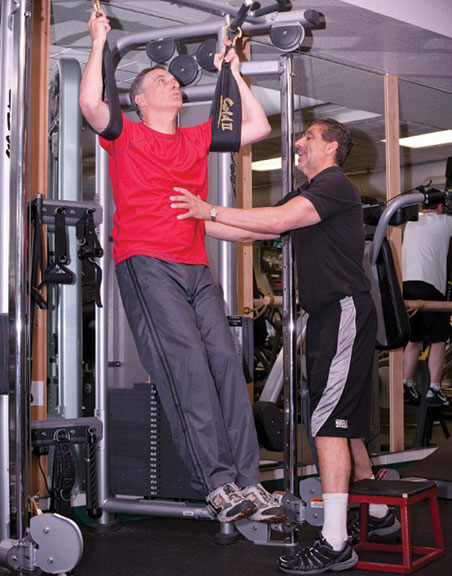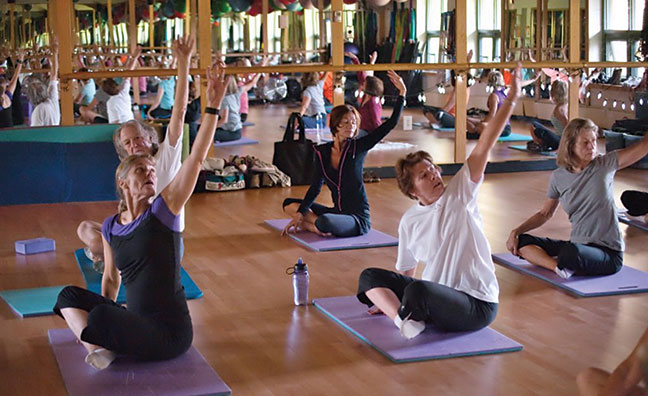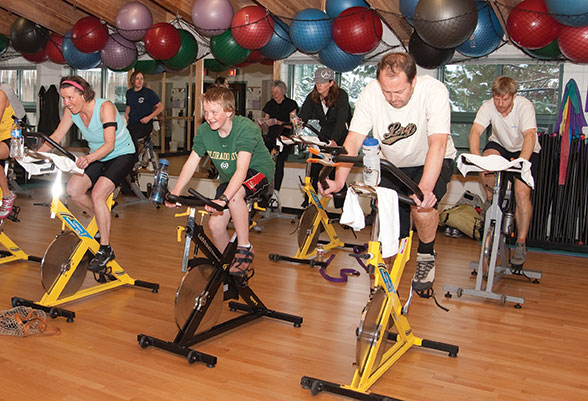
09 Dec Getting into Ski Shape
Baseball playoffs are beginning, pumpkins are for sale in front of the local grocery store and leaves are falling. Mother Nature is whispering her annual reminder, “Get ready for snow.” You’ll probably get your skis waxed, you may have even checked airfare or hotel rates for your favorite mountain destination and you finally found that comfortable pair of boots. But what about the thing that makes the skis go? You and your muscles, joints and psyche. Our bodies are the most important piece of ski equipment we have. 
Train like the Pros
The off-season is a time to recover from any injuries that were sustained during the regular season and increase power, strength and speed so that you are ready to dominate when the snow falls. Logically, the best way to train for any sport is to train your energy systems and muscles as close to the function required for that specific sport—meaning the best way to train for skiing or boarding is to ski or board.
That’s possible for a few athletes—Heavenly team skier, U.S. freestyle star and South Lake native Sho Kashima spends time in South America and Canada during the off-season. But, when he can’t get on the snow, Kashima is in the gym five to six days per week working on his core strength and endurance—both critical to a freestyler’s aerial maneuvers.
South Lake Tahoe native and Sierra-at-Tahoe skier Maddie Bowman is a ski superpipe U.S Olympic gold medalist and defending X Games champion. Bowman was recovering from a knee injury this summer but continued to push herself as her body allowed, she says. When she wasn’t swimming, mountain biking or taking her new road bike out for a spin, she was at the gym doing cardio, core and strength training.
“I surround myself with active, athletic people,” says Bowman. “Workout time flies by when you’re having fun playing outside!”
Off-season sports such as biking, hiking and swimming, as well as strength training, can benefit your skiing and boarding, Bowman says.
Six Principles of Conditioning
Specific training for winter sports is not available for everyone, though, so the best way to prepare your body before winter is to plan a balanced, overall fitness program that incorporates the principles of conditioning and trains the entire body, says Pandora Bahlman, the manager of fitness, health and wellness at Incline Village’s recreation center.
According to “Train This Summer for Winter Sports!,” a newsletter written by Bahlman, there are six principles of conditioning. The first is the overload principle. In order to develop fitness in all fitness components (endurance, strength and flexibility) you must gradually subject your muscles to unaccustomed stress.
If you progressively train harder at each workout, you are using the overload principle. The progression principle is adjusting the exercise program to continually improve as a person’s fitness levels increase. Frequency, intensity and amount of time may need to be changed. The third principle is the variation principle. Minor changes in training regimens yield more consistent gains in sport performance.
Training programs include variations in intensity, duration and volume. The reversibility principle states that athletes lose the beneficial effects of training when they stop working out. In short, if you don’t use it, you lose it. The individual differences principle simply means that, because we all are unique individuals, we will all have different responses to an exercise program. Well-designed exercise programs should be based on individual differences and responses to exercise.
When choosing your training program, consider body size and shape, genetics, past experience, chronic conditions, injuries and even gender. Last, but not least, the moderation principle states it is important to have rest periods that allow the body to adapt. Too much training can lead to injury. 
Finding Balance
“To create an optimum summer conditioning program, I recommend the following training: Do 45 minutes of cardiovascular (swimming, running, hiking, cycling, group cardio fitness classes, et cetera) exercise five days per week,” Bahlman says. She adds that it’s wise to take three days a week to do a functional strength training workout routine that involves performing compound exercises designed to enhance the relationship between your body’s muscular and nervous systems. Try to include motions such as pushing, pulling, climbing, squatting, bending, jumping, twisting, turning, balancing and changing direction.
“Functional strength training is not just done to improve your appearance, but to help you get better at regular daily and sports activities,” says Bahlman. She also recommends muscle specific training of legs and core, TRX suspension training, fitness trails or some type of combination movement/exercise group fitness class. “On top of that, you should do 10 to 15 minutes of range-of-motion and flexibility training each day,” she says.
If it is too complicated or time-consuming to create a training program on your own, try dropping in on a variety of group fitness conditioning classes each week, or hire a fitness professional to create a program tailored to you. One or two sessions with a trainer may be all you need to stay on track.
While an off-season ski training workout may sound challenging, it’s not as hard as it seems. Aim to get 30 to 40 minutes of cardio three or four days a week, then set aside two or three days for strength training. If that still seems excessive, take heart knowing that any consistent exercise routine will help keep you fit, which will lead to a more successful, and hopefully safer, season on the slopes.
Kristin Close is a Reno-based writer and journalism student at the University of Reno, Nevada.




No Comments